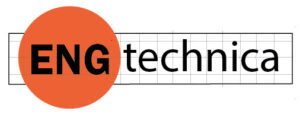The Consumer Electronics Show, CES, if not a physical realization of science fiction, may be a portal into the future. Where else would you hear of a land-based aircraft carrier?


Even with the blizzard of press releases from companies exhibiting at CES 2025, Expeng AeroHT flies out. Flying cars may be passé for CES veterans (the company displayed its first flying car at CES 2024), but even the most jaded tech journalist will have to admit that a two-seat chopper stored in the back of a 6-wheel Cybertruck-looking vehicle is a first.
In a video, we see the Land Aircraft Carrier in CG. It automatically unloads the six-rotor aircraft, which unfurls its rotor blades and takes off with a pilot and a passenger.
Pilots of fixed-wing aircraft will make fools of themselves trying to fly helicopters, but Expeng AeroHT says that an ordinary person can learn to fly their chopper in 5 minutes and master it in 3 hours.
The company will be previewing it to the media at the Las Vegas Convention Center at CES 2025. As it is indoors, I expect we won’t see it fly.
One might dismiss the “land carrier” as outlandish, unlikely to pass aircraft regulations in the US and the EU and relegated to airspace over countries where dollar-billionaires flaunt their wealth over millions less fortunate. Still, we can no longer dismiss China’s commitment to EVs and with Xpeng AeroHT, to the new air mobility. The company had its first flying car prototype in 2016 and has since managed to get what looks like a full-size car off the ground. It has rolled out a super-futuristic eVTOL (electric vertical takeoff and landing) aircraft that keeps its blades tucked under its back (like a ladybug but sleeker), converting Transformer style into a quadcopter. That’s radical. To have cameras instead of side view mirrors and a pillar-to-pillar LED display is to be expected.
Xpeng AeroHT will be taking advanced orders by year-end and promises to ship by the end of next year. Cost: 2 million yuan ($280,000).

